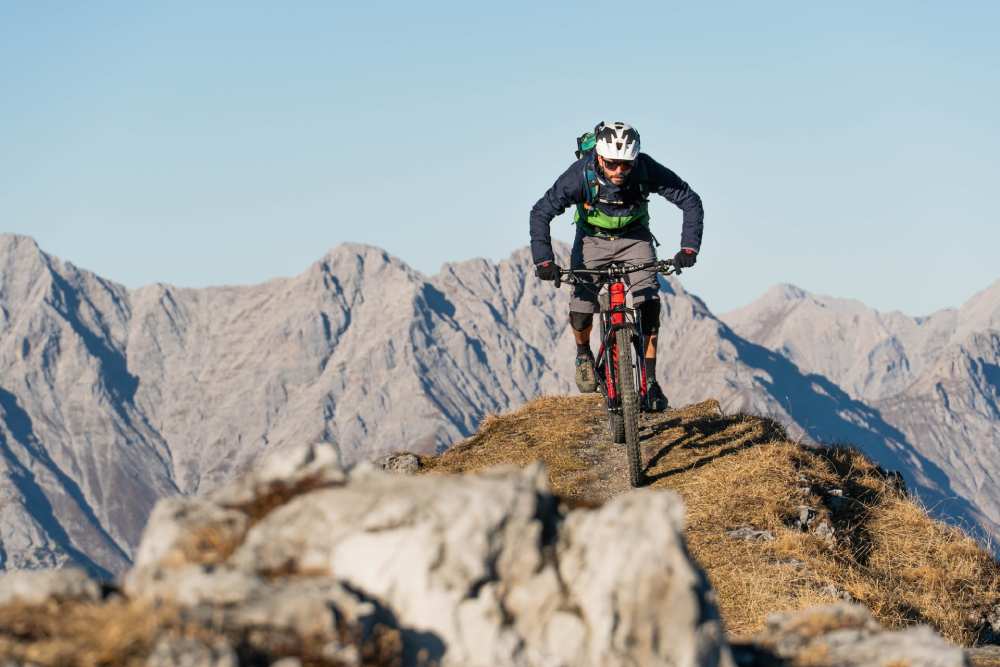
The perfect pair of mountain bike glasses must fulfill a few criteria – they have to fit your face without leaving too much space, be comfortable while cycling, and offer an unimpeded view of the trail. Lens height, color variety, and polarization are essential, too, as is the ability to change lenses depending on conditions.
Nose Bridge
Mountain biking is an exhilarating sport requiring riders to navigate varying terrain and light conditions. Finding a pair of MTB glasses that fit well and protect the eyes from debris is essential to enjoying this outdoor activity safely. Mountain bike glasses are built with these needs, including durable and impact-resistant frames.
The frame and nose bridge shape is another factor to consider when searching for a pair of glasses to provide comfort and protection on the trail. A narrow frame that fits close to the face will fog up more quickly than a more comprehensive design, as air must circulate to keep the lenses clear. A wide fit will also increase the risk of lenses falling off while riding, so choose a style that sits further away from your forehead and cheeks.
Lens color and function are essential to consider as well. Brown or gray lenses help reduce glare without altering color perception for bright and sunny conditions. Yellow or clear lenses are ideal for darker conditions as they enhance contrast and make seeing obstacles and terrain changes easier.
Other features in a good pair of MTB sunglasses include anti-fog, venting, and helmet compatibility. Look for a hydrophobic coating that repels sweat and venting that keeps the lenses from fogging during strenuous efforts or while riding in humid environments. Additionally, look for a pair of glasses constructed from one flexible piece so they only have a few small parts that can break off on the trail.
Temples
The temples of your sunglasses must be long enough to cover the top of your ears but not so long as they touch your cheeks. This helps your glasses stay in place while you ride. The last thing you want is a pair of glasses constantly bouncing around in your face.
In mountain biking, ample lens coverage helps you spot obstacles and terrain and makes keeping your eyes on the trail easier.
While polarized lenses are ideal for water and snow sports because they block horizontal light, they differ in mountain biking. Polarized lenses can hinder your performance on the trails because they reduce depth perception, which is crucial when riding technical mountain bike trails.
Most MTB brands have developed contrast-enhancing lenses for their glasses, making it easier to see the trail ahead.
Ventilation
While the fit of a pair of glasses is critical, it’s also important to consider how well they ventilate. Ventilation helps keep lenses from fogging while you’re riding — and a pair of mountain biking sunglasses without clear, unobstructed vision is a recipe for disaster on a technical trail. Fogging happens when cool air meets warm, and your cycling sunglasses need to be able to keep their cool.
If your sunglasses start to fog up while you’re grinding a challenging climb, it’s often because they don’t have enough ventilation. This means the lens sits too close to your cheeks, restricting the flow of air and creating condensation. Glasses that are wider and sit higher on the face can avoid this issue.
Polarized lenses are suitable for water and snow sports as they reduce glare from the sun, but you don’t need polarized lenses for mountain biking because there isn’t any reflective light on a bike. Instead, look for a non-polarized lens to enhance contrast and provide a more neutral terrain view. Photochromic lenses are an excellent option for MTB because they adjust automatically to different lighting conditions. The solar MTB lenses are a great example of this technology, which changes the tint of the lenses depending on sunlight or shade. This lets you see clearly on bright days while reducing glare when it’s dark or cloudy.
Helmet Compatibility
Whether you wear glasses or goggles, finding the perfect fit is critical for comfort and performance. Glasses that sit flush with your forehead and cheeks tend to fog up more frequently than those with space between the lens and your face. Fog could be a better look on the trail and lead to a loss of vision, which could be better when navigating technical terrain.
Having ample coverage is also essential as it allows for a larger field of vision to spot trailside foliage and other debris before it becomes an unavoidable obstruction. Look for lenses that wrap around most of your face, and consider adding a brow frame for extra coverage. Modern flexy plastics are also a great choice as they are super-comfy on the head and offer the added benefit of not being easily broken in a crash.
Lens color is another important consideration, and tinted or amber lenses are an excellent option for mountain biking as they elevate specific colors and heighten contrast, making it easier to see trail features and react to them quickly on the ride. Polarized lenses are not recommended for mountain biking as they are darker and can impede depth perception, which is necessary to read the terrain on technically challenging trails.
